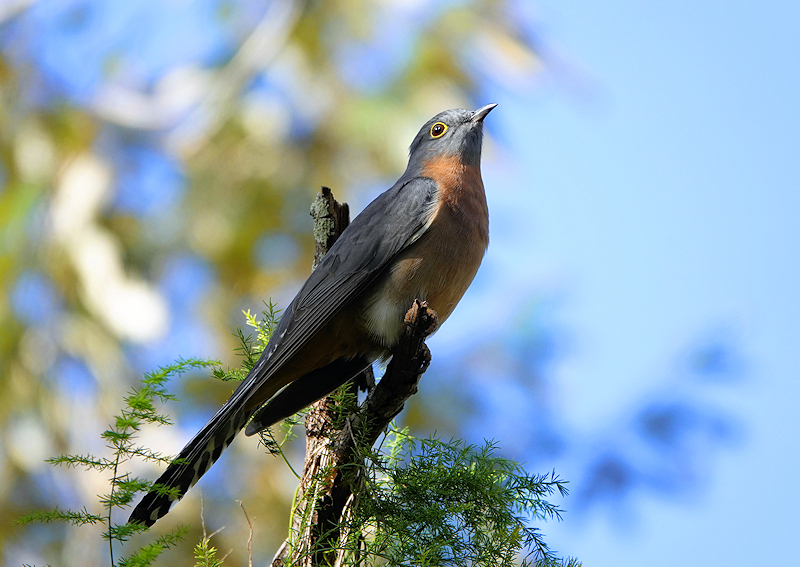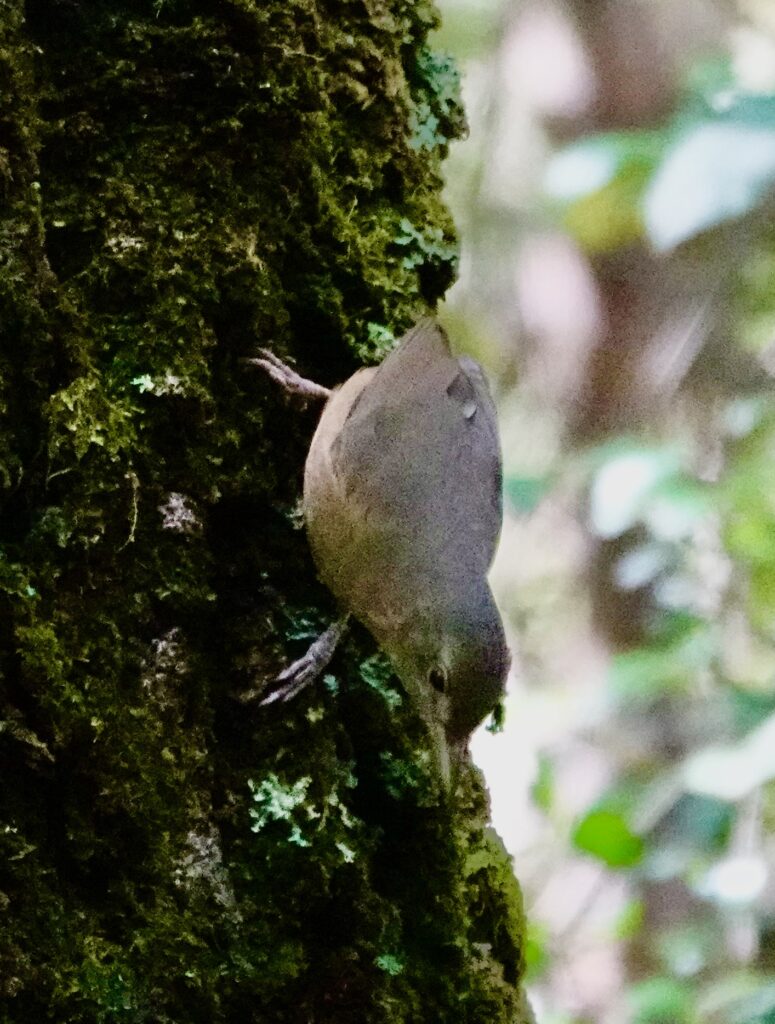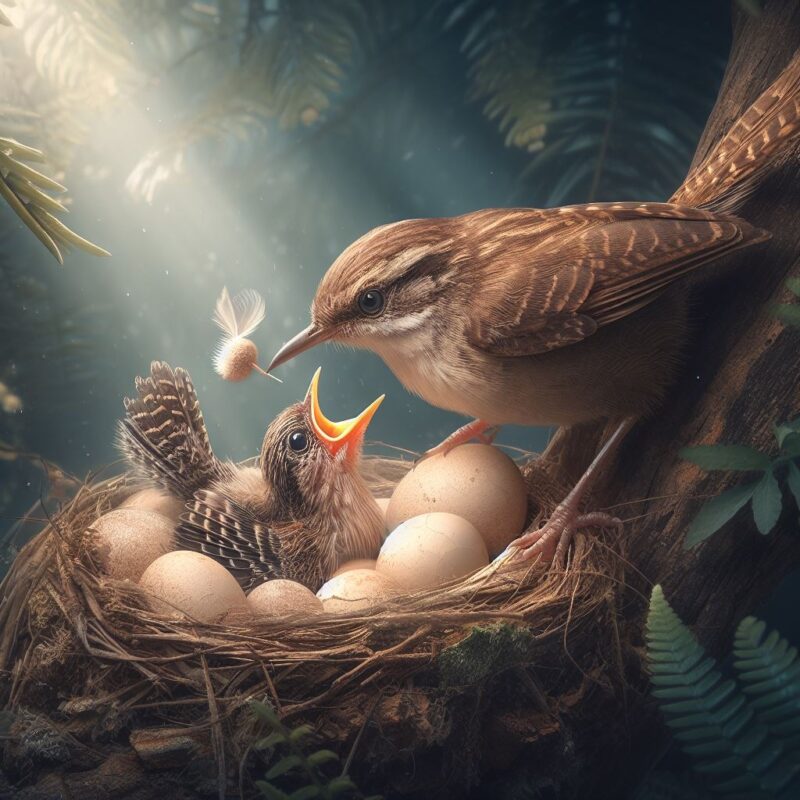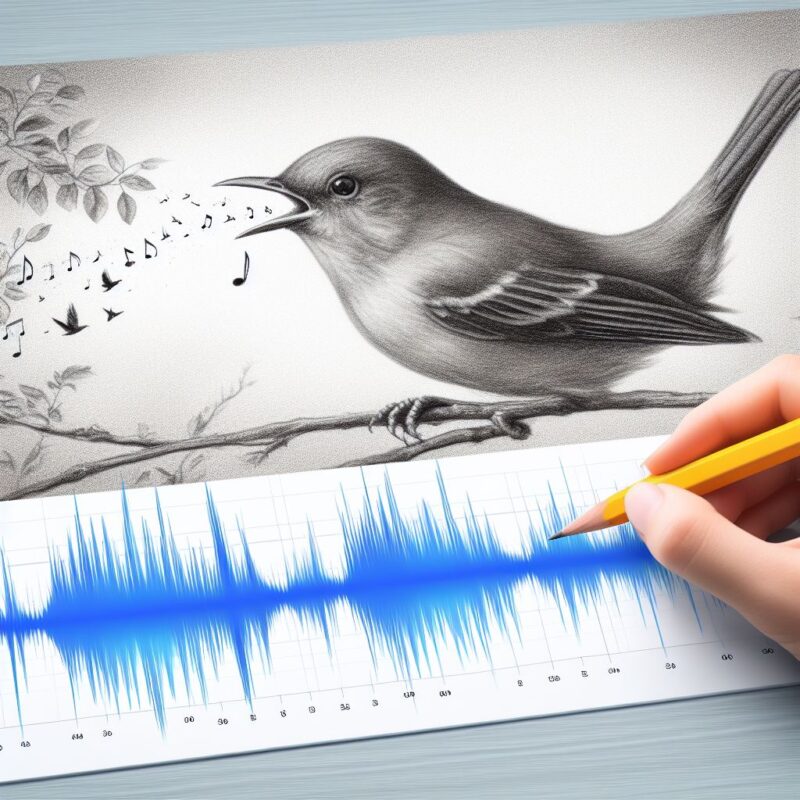The Fan-tailed Cuckoo: Master Brood Parasite

Introduction
The world of birds is a fascinating realm filled with diverse species, each with its own unique adaptations and survival strategies. Some birds have developed rather unconventional ways of ensuring their survival, one of which is brood parasitism. Brood parasites are birds that lay their eggs in the nests of other bird species, relying on the unsuspecting foster parents to raise their young. The Fan-tailed Cuckoo (Cacomantis flabelliformis) is a prime example of a brood parasite that specializes in deceiving its hosts, notably the Large-billed Scrubwren (Sericornis magnirostra).
The Fan-tailed Cuckoo: A Master of Deception
The Fan-tailed Cuckoo is a medium-sized bird native to Australia. It measures around 20 to 25 centimeters in length, with a distinctive fan-shaped tail, grey plumage, and a slender body. But what truly sets this bird apart is its remarkable ability to exploit the parental instincts of other bird species, particularly the Large-billed Scrubwren.
Brood parasitism, an evolutionary strategy seen in several bird species, is a unique and cunning way for birds like the Fan-tailed Cuckoo to ensure the survival of their own offspring. Rather than building their own nests and raising their young, they lay their eggs in the nests of other birds. The unsuspecting host birds then unwittingly raise the parasitic chicks as their own, diverting valuable resources and energy away from their own offspring.

The Fan-tailed Cuckoo and the Large-billed Scrubwren
The Large-billed Scrubwren is a common host for the Fan-tailed Cuckoo in the vast eucalyptus forests and woodlands of eastern Australia. This small, insectivorous bird constructs intricate cup-shaped nests using twigs, leaves, and grass. The Fan-tailed Cuckoo is a shrewd operator, typically laying its eggs in the nests of Large-billed Scrubwrens during their breeding season, which spans from late winter to early spring.
The Fan-tailed Cuckoo’s eggs closely mimic the appearance of the Scrubwren’s eggs, making it challenging for the host bird to distinguish between the two. This mimicry is crucial to the cuckoo’s success as it ensures that the host parents accept the parasitic egg as one of their own. Once the cuckoo’s egg is laid, the Scrubwren incubates it alongside its legitimate eggs. The Fan-tailed Cuckoo chick hatches earlier and is often more developed than the Scrubwren chicks, giving it a competitive edge when it comes to securing food from its foster parents.

The Parasitic Chick’s Strategy
The Fan-tailed Cuckoo chick is a cunning mimic and often employs various strategies to maximize its chances of survival. It frequently mimics the vocalizations of the Scrubwren chicks to elicit feeding responses from the unsuspecting foster parents. This deceptive behavior ensures that the parasitic chick receives ample food and care, sometimes at the expense of the Scrubwren’s biological offspring. As the cuckoo chick grows, it may even eject the host’s eggs or chicks from the nest, further guaranteeing its own survival.
The Host’s Response
Despite the Fan-tailed Cuckoo’s successful deception, some host birds have developed strategies to counteract the parasitism. Scrubwrens may engage in “mafia behavior,” recognizing the cuckoo egg and deserting their own nest, forcing the cuckoo to abandon its parasitic attempt. Nevertheless, this strategy isn’t foolproof, and cuckoos have evolved to adapt to these defensive measures.

Brood Parasitism in the Avian World
The Fan-tailed Cuckoo’s interaction with the Large-billed Scrubwren provides a fascinating glimpse into the complex world of brood parasitism. Numerous bird species worldwide employ similar tactics to exploit the parenting instincts of others. Birds such as the Common Cuckoo in Europe, the Brown-headed Cowbird in North America, and the African Cuckoo in Africa have also evolved as brood parasites. Each species has its own host and adaptations to ensure their parasitic offspring’s survival.
Conclusion
The Fan-tailed Cuckoo is a master of deception in the avian world, specializing in brood parasitism as its primary survival strategy. Its ability to mimic the eggs and vocalizations of its host species, the Large-billed Scrubwren, demonstrates the intricate adaptations that have evolved over time. The world of brood parasites, while intriguing, serves as a constant reminder of the remarkable diversity and complexity of the natural world, where every species plays a role in shaping the delicate balance of ecosystems.
We are affiliated with Amazon and make a small royalty at no extra cost to you, so by using the links below to purchase your next birding gear you can help us to maintain Simply Birding and continue to bring great content:

Canon, Sony and Nikon cameras: https://amzn.to/4gmtDWk

Lenses for bird photography: https://amzn.to/3WG3vyF

Tripods: https://amzn.to/3PVDNT0

Memory Cards: https://amzn.to/3PV4Y0z

Bird books: https://amzn.to/42NgsKS

Binoculars for bird watching: https://amzn.to/42G0nGZ

Spotting Scopes for bird watching: https://amzn.to/4hom5nq















